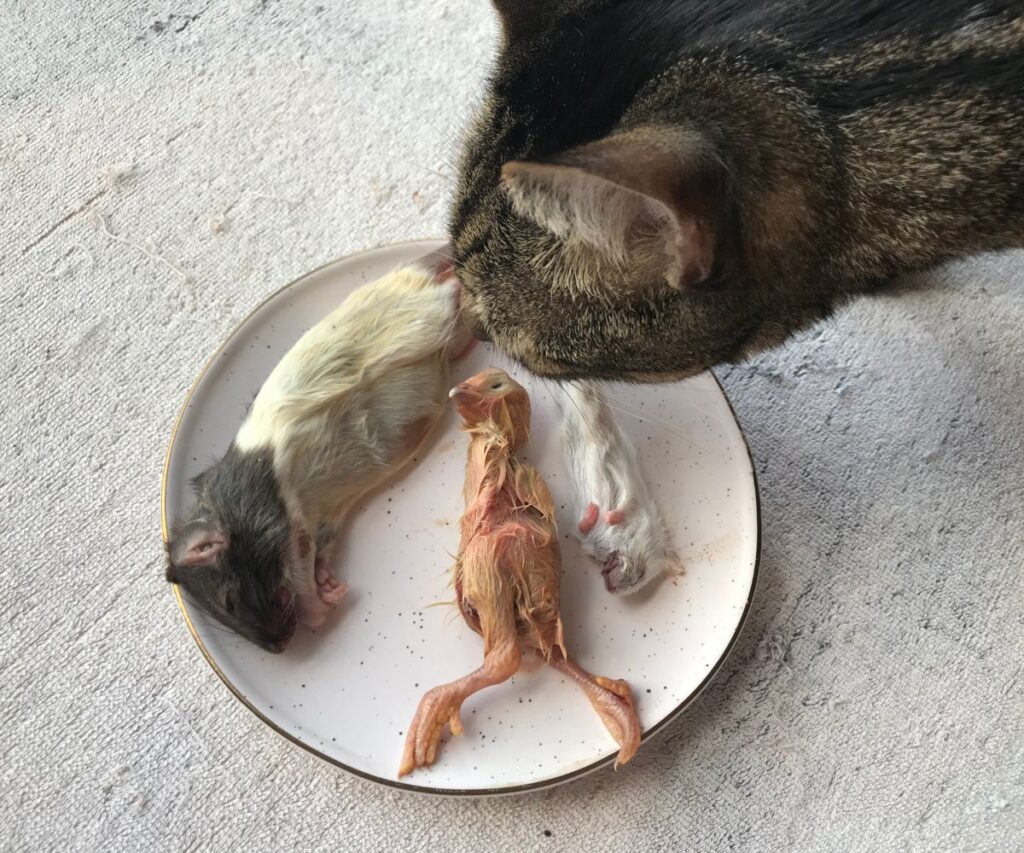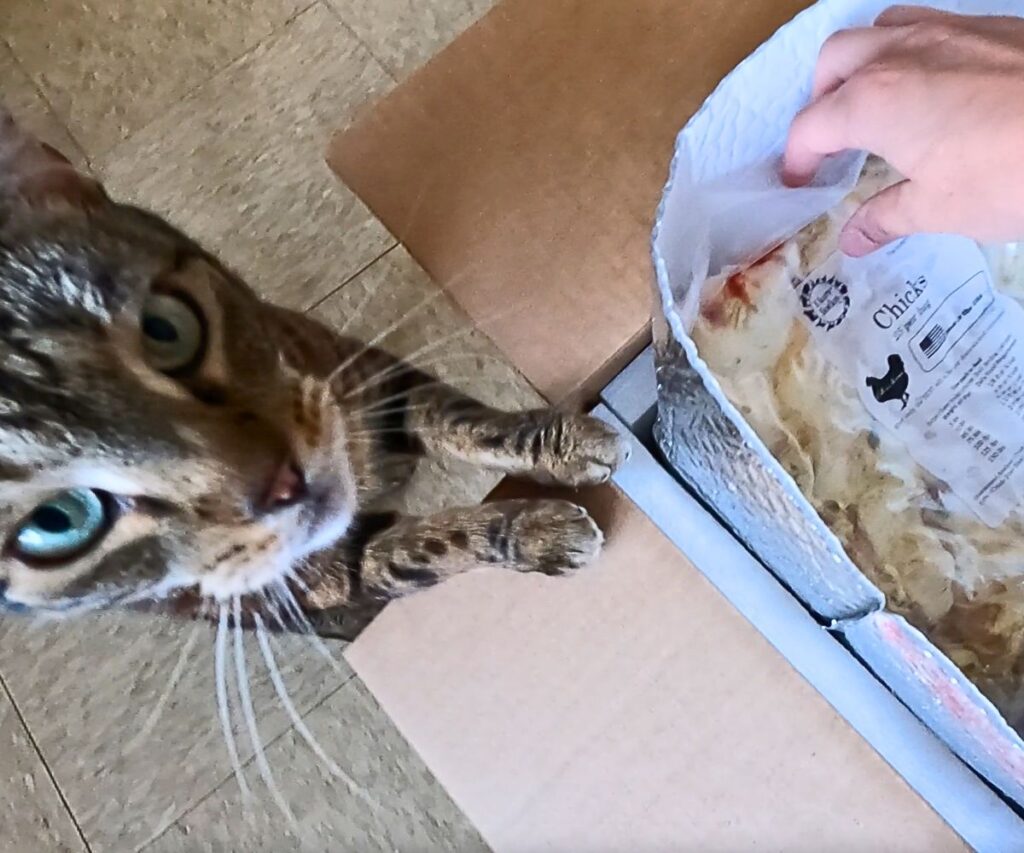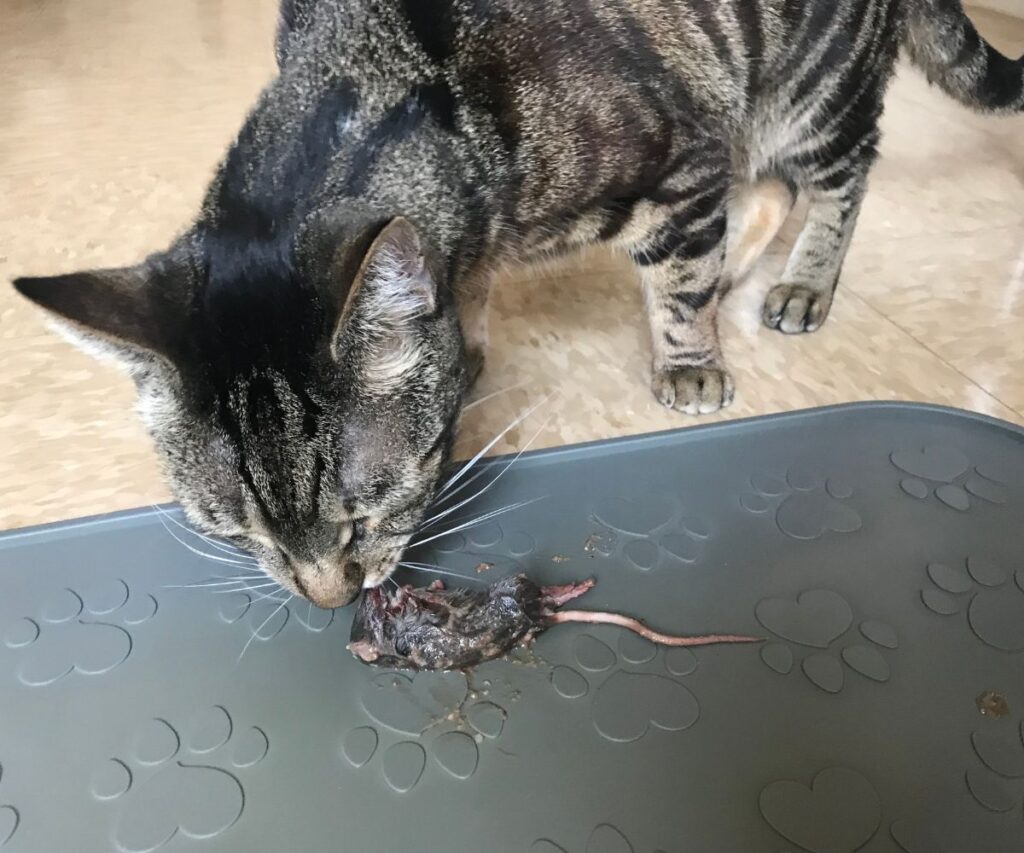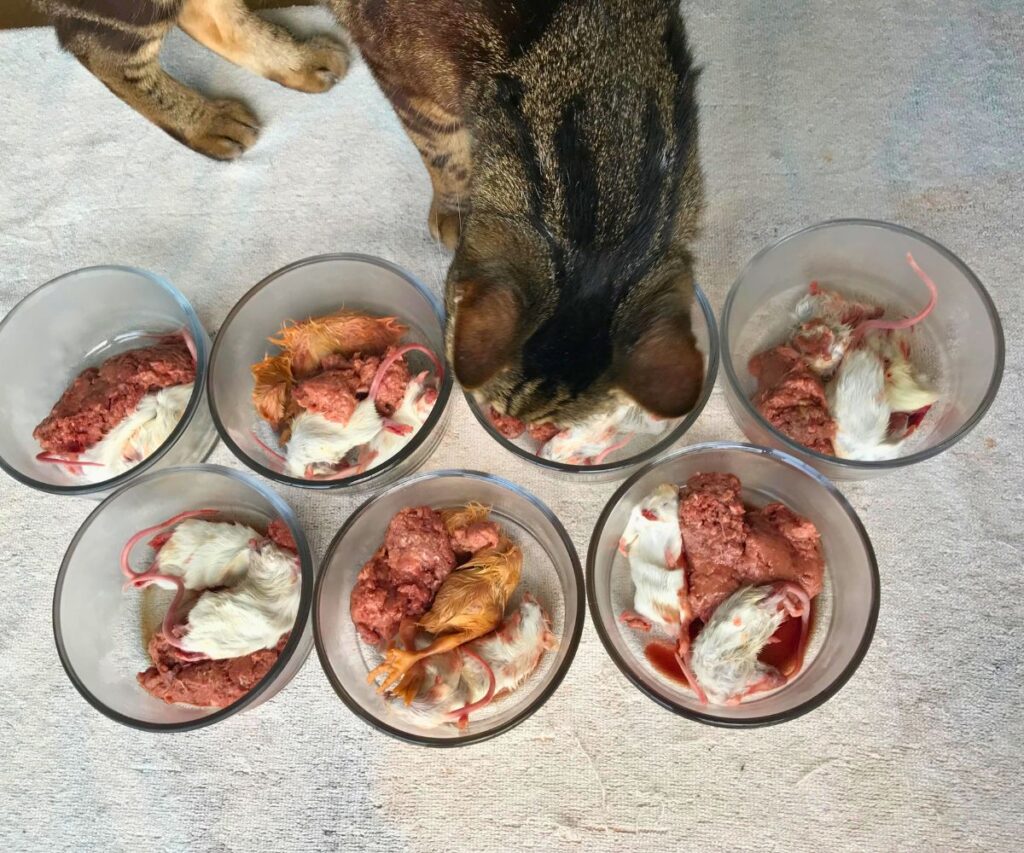The pros and cons of feeding whole prey will determine if it’s right for you and your cat.
I stopped feeding whole prey because of these cons.
And these cons prevented me from going back to whole prey for years.
But not anymore.
Now I feel that the pros outweigh the cons. There are so many benefits of feeding whole prey!
I also feel that I should have disregarded these cons from the beginning.
PS – If you’re ready to switch to a healthy raw diet, my Raw Feeding Blueprint is for you!
I’ve created the most supportive plan inside this course! Think, every week is planned out for you with printable trackers, 50+ balanced recipes to choose from, meal prep hacks, and so much more. If you’re ready to make your cat’s raw food at home, my Raw Feeding Blueprint course is for you!
What are the pros of feeding whole prey?
- Whole prey are natural proteins that feral cats eat
- You can feed a wide variety of species and age ranges – perfect for preventing picky eating
- Whole prey provides extra nutrients from blood, skin, fur, organs, etc.
- Chewing on prey is great for teeth cleaning and mental stimulation
- You can source prey easily from breeding facilities (mainly for reptile owners)
- Whole prey is easy to portion, thaw, and serve
Whole prey are natural proteins that feral cats eat
Cambridge University Press compiled studies that looked at the feral cat’s diet. Cats mainly eat rodents, rabbits, and small birds. With a small amount of other prey species.
But the main point is that they eat whole prey. And they get lots of variety.
Variety is excellent for cats to prevent picky eating. Variety also provides a rounded-out nutritional profile.
Whole prey options from breeding facilities include:
- Mice
- Rats
- Day old chicks
- Baby pheasants
- Quail
- Pinkie rabbits
- Hamsters
- Gerbils
And you’re getting the entire prey which also includes all the tendons, ligaments, skin, blood, organs, etc.

Raw diets aim to recreate whole prey. But there’s a lot more in whole prey that we can’t provide in raw diets.
Most of the time we cannot feed brains, eyes, glands, blood, skin (maybe on chicken wings/necks), fur and feathers (maybe with treats), and other parts.
So you’re getting more nutrients when you feed whole prey.
Whole prey is great for chewing and mental stimulation
I really enjoy that Jericho is chomping on appropriately sized, natural proteins.
Previously, he was eating a homemade raw meaty bones diet.
Unfortunately, I took too long to switch to raw meaty bones. And Jericho developed some dental issues. I talked about his dental cleaning in another video.
But he couldn’t chew chicken wings and chicken necks as well as he needed to.
But chewing whole prey is much easier. The bones are smaller and softer.
And overall whole prey are appropriately sized for cats.

Whole prey variety and how to source
There’s a lot more variety in whole prey compared to appropriate raw meaty bones as well.
Really we only have chicken wings, necks, and feet, small rabbit front legs, and potentially duck wing tips. Three proteins compared to the eight options listed above.
Sourcing whole prey isn’t as easy as going to the farmers market or grocery store for homemade ingredients. But it is still easy enough to order online.
One of my favorite pros of feeding whole prey is how easy it is to portion, thaw, and serve.
I do feed a bit of ground raw to make up for any differences in volume each day. But it’s still very easy to portion it out.
There are fewer ingredients to weigh and cut. That cuts down on meal prep time a lot.
And it’s easy to serve.

What are the cons of feeding whole prey?
- Much higher cost compared to homemade raw
- Nutritional data is lacking so there’s a lot of guesswork
- Feeders aren’t raised in a natural environment or fed a natural diet
I was spending around $1.57 per day on Jericho’s homemade raw meaty bones diet. But whole prey—whew! That’s a much higher cost.
If I was to feed 100% whole prey it would be about $4.16 per day.
This isn’t a make-it-or-break-it cost, however. I’d rather spend more and get more variety, smaller appropriate chewing sizes, and natural proteins.
It’s great that we can provide variety. And we know that whole prey is natural for cats. But unfortunately, nutritional data is lacking.

Feral cats hunt out based on their nutritional requirements. But they rely solely on us when we keep them indoors.
So we have to do a lot of guesswork when feeding a whole prey diet. And just trust that the nutrients are there, provided we feed variety.
Another concern about nutrition is the feeders’ environment and diet. This affects the nutrition that prey provides.
Feeders are not raised in their natural environment and do not eat their natural diet.
So there is even more guesswork involved with balancing a whole prey diet.
This con held me back the most.
But I came to the conclusion I’d rather feed natural proteins than unnatural proteins.
Again, the pros outweigh the cons for me.
How you can feed whole prey
Want to feed whole prey too? The first step is to switch from dry/wet processed food to a premade raw diet. Check out how to transition cat food for help on that.
Yes, whole prey is natural. But your cat probably won’t recognize it as food if he has no fresh food in his diet.
Going from dry to whole prey is like going from addicting chips and candy to fresh filet mignon.
If you’re already feeding fresh food, check out my mouse cat food recipe to get started easily. This recipe is complete and balanced and uses ground mouse so the transition is easier! Then check out my whole prey recipe for cats.
Need help switching to raw?
Grab my Raw Feeding Blueprint and get the same plan that 564+ cat parents used to switch to a healthy raw diet easily and confidently. Plus 50+ balanced raw recipes, meal prep tips, and so much more!
